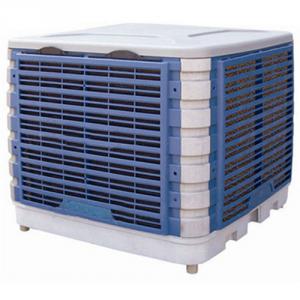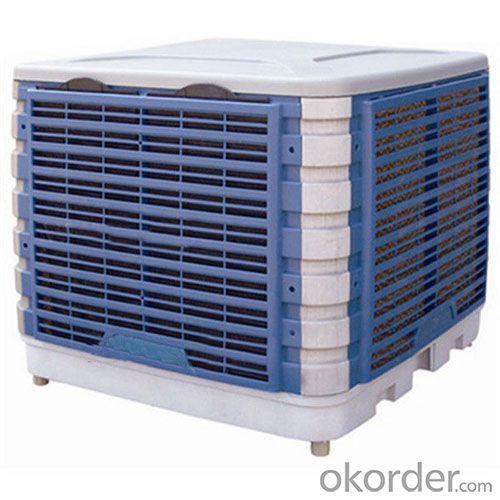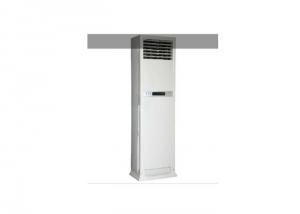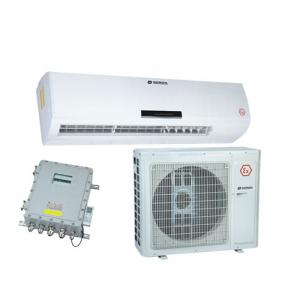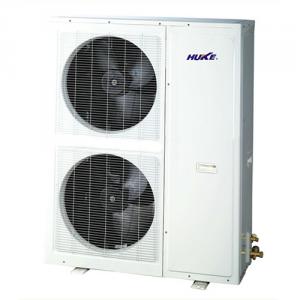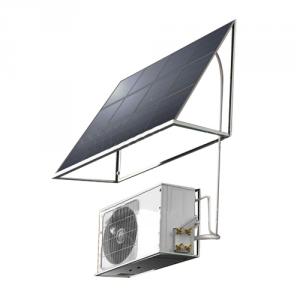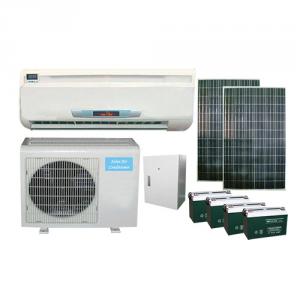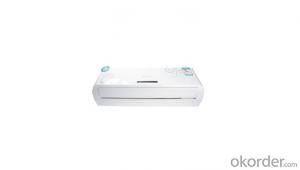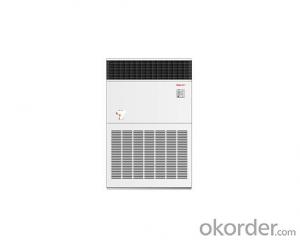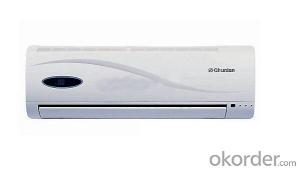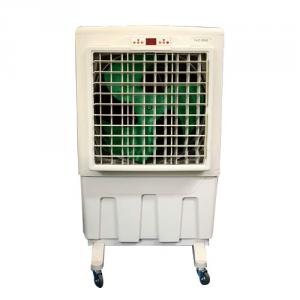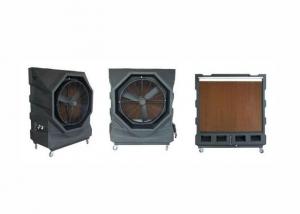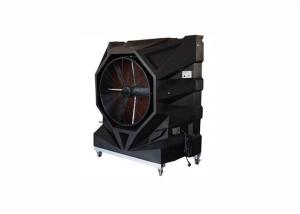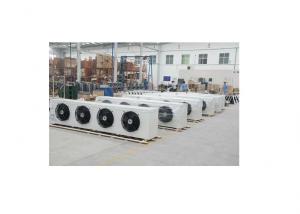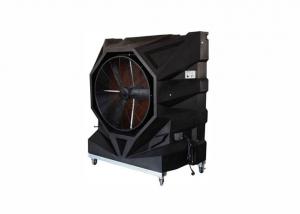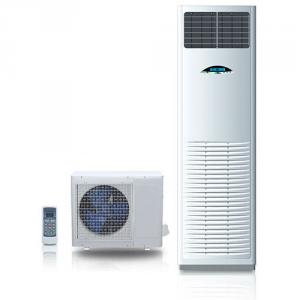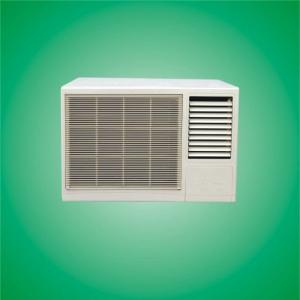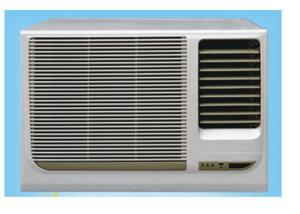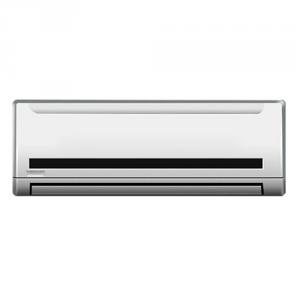2014 New Industrial Evaporative Air Cooler
- Loading Port:
- Ningbo or Shanghai
- Payment Terms:
- L/C,T/T
- Min Order Qty:
- 10 Sets set
- Supply Capability:
- 1000 Sets per Week set/month
OKorder Service Pledge
OKorder Financial Service
You Might Also Like
2014 new industrial evaporative air cooler
Ariflow 18000 m3/ h
Application Area 100-120
Pressure 380V / 220V
Motor Power 1100W
Fan Type Axial
Air Distance ≤35m
Noise ≤75dB
Water Consumption Capacity 15-20L/h
Water Storage Capacity 40L
Shell Weight 32 kg
Weight 70kg (no water)
Size(L*W*H) 115*115*93 cm
Discharge top/side/down discharge
Packing carton box
Color maize-yellow
FAQ
Q1:Why is it important to use home air conditioner filters?
A:Without them you can clog up vital parts of the heating or cooling components that can be difficult to clean out and can cause severe damage that will be much more expensive to repair than the inconvenience of replacing a filter once a month.
Q2:What is VRF Air Conditioning System?
A:VRF air-conditioning systems owe their growing popularity to their ability to meet a wide range of requirements.
- Q: A few years general air conditioning warranty?
- Each brand of air conditioning of fixed number of year of the warranty. If is the gree, they are the whole machine, compressor warranty for six years. If it is daikin machine, compressor warranty for one year. Mitsubishi is the machine for one year, three years of compressor. Overall domestic hundreds of ninety is 6 years, imported to ask before you buy, because I'm not sure ~
- Q: How many degrees electric air conditioning in a day
- It depends on what is the power of air conditioning, the air conditioner on power multiplied by the time of divided by 1000, the resulting number is what the air conditioning in this period of time how much electricity.
- Q: A little big, about 20 square meters, western is better in the afternoon, also a refrigerator in the room The air conditioning can be used to buy a few horses please? How much can effect comparing And could you tell me the general case, low energy consumption is larger than that of high energy consumption of air conditioning how much point (in one hour)
- Choose the three principles of air conditioning 1. Due to the heating effect is lower than the refrigeration effect of air conditioning applicable area is less than the applicable area of summer (winter), buy air conditioning should be the heating indicators shall prevail. So, the choose and buy air conditioning according to the applicable area in winter. Of course, if buy used by air conditioning is based on (summer) applicable area (the same below). 2. As a result of the use of air conditioning room situation and regional differences in climate, and the plan of extreme weather, buy air conditioning should not buy small. So, should according to applicable area in winter, and applicable area of the lower limit of winter to buy air conditioning. 3. Air conditioning can effect comparing = refrigerating capacity present refrigeration power. So, with a number of air conditioning, the choose and buy high than eer eer low energy saving province electricity. , for example, a customer for their 20 square meters room when the choose and buy air conditioning, some brands of 1.5 air conditioning winter for 16 ~ 20 square meters, covers an area of 2 horse winter air conditioning applicable area is 22 ~ 26 square meters, the customer should choose and buy 2 air conditioning. Then see the brand as two horses there are several kinds of air conditioning, which can effect comparing the choose and buy high (for example, there are 2 kinds, one kind of eer 3.2, another eer of 2.6, the choose and buy of 3.2).
- Q: Household air conditioning to choose what kind of good?
- The gree. Hall with a 2 p, if want to mute to gree sleep treasure room. Frequency conversion, after all, a bit expensive. Ordinary have CV 18 spring, new fortunella venosa, etc.
- Q: Open the wastage of the dehumidification function of air conditioning for a long time
- Air conditioning dehumidification and cooling mode of operation principle is the same. Air conditioning refrigeration mode had certain dehumidification function. Just running dehumidification mode of air-conditioning, is running at full capacity, low indoor machine vestibule for maximum dehumidification function.
- Q: Where does air conditioning come from?
- Air conditioning: is short for air conditioning unit. It is composed of [indoor machine] and [the] outdoor. Indoor machine is air supply Adjust the room temperature. [the] outdoor with compressor fan cycle gear motor, etc.] [fluorine is circular wind [in] [water]. Due to inhalation of outdoor fresh air [] through [indoor machine] after the exhaust heat will [water] Indoor hot air discharge outside. So you don't cause indoor oxygen shortage.
- Q: How long it will take air-conditioning on the right
- Summer or winter, people stay in air conditioning room after an hour or two, you should open a window for air. As in the summer, but 4 ~ 5 o 'clock in the morning, winter can be in 1 ~ 2 o 'clock in the afternoon, open the Windows and doors, increase the circulation of fresh air, so one or two hours is appropriate.
- Q: Household air conditioning open is how liquid?
- You see the two outdoor copper tube, a thick, one thin, find a Allen wrench, open air conditioning refrigeration, the first close thin tube, the tube shut about three minutes in the coarse, then OK
- Q: Household air conditioner have drainage pumps?
- Not very expensive, I'm not doing maintenance, the price of the parts is not very clear, guess that is more than ten dollars, but you want to confirm that this is the ceiling embedded, other forms of the unit are don't need this stuff, and it is embedded in the one horn of the condensate plate, not highlight the fuselage outside, but inside, if in the outside box can also be a junction box or hook..
- Q: With the brand of air conditioner outdoor parts of different models of different size, weight is different also. Also is frequency conversion, the same size. The impact on the power consumption of the big??
- The residential air conditioning machine size: 1 seg horse size (width * deep *) : 848 * 540 * 540 mm; 1.5 the type size (width x height x deep) outdoor: 848 * 540 * 540 mm; Three air conditioning separate-bodied air-conditioners horse (width x height (deep) : 900 * 750 * 330 mm. The seg is also known as the host of air conditioning, air conditioning refrigeration (hot) of the four parts: compressor, condenser, capillary and evaporator of the top three are in outdoor. The compressor is the heart of the air conditioning in the outdoor, mainly through the compressor air conditioning refrigerant compressed into high temperature and high pressure gas to achieve heat transfer.
Send your message to us
2014 New Industrial Evaporative Air Cooler
- Loading Port:
- Ningbo or Shanghai
- Payment Terms:
- L/C,T/T
- Min Order Qty:
- 10 Sets set
- Supply Capability:
- 1000 Sets per Week set/month
OKorder Service Pledge
OKorder Financial Service
Similar products
Hot products
Hot Searches

